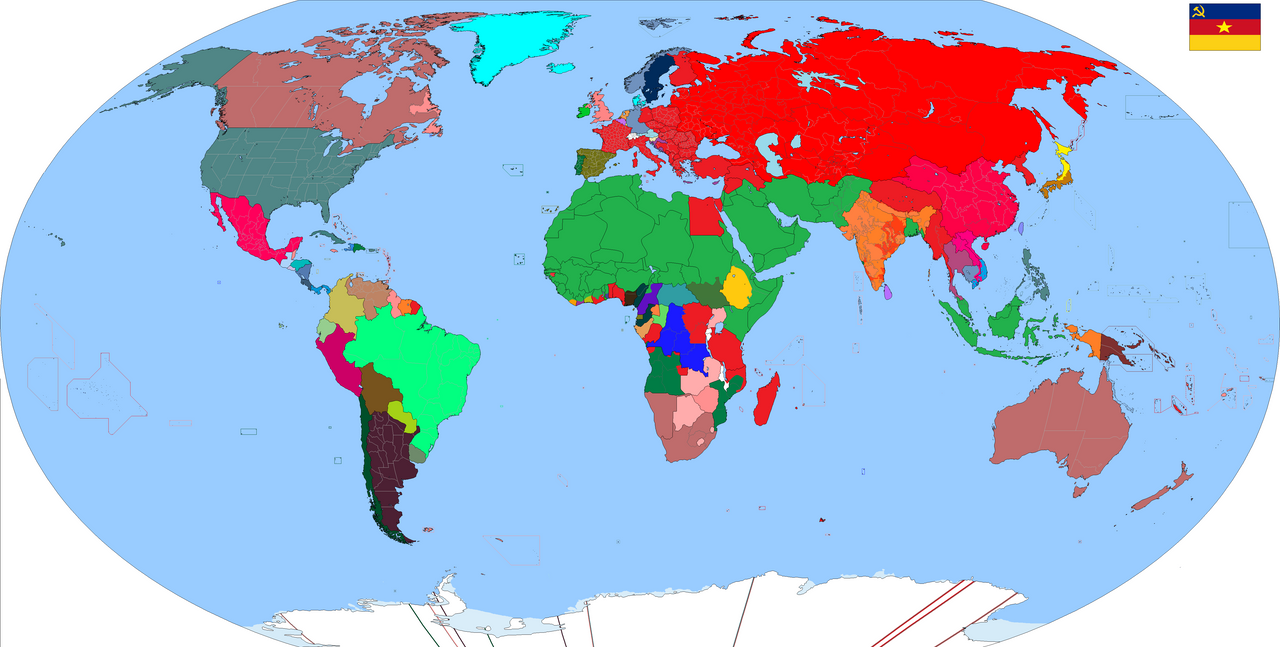HOME | DD
 SheldonOswaldLee — Chapter 151: Stalin's New Order
SheldonOswaldLee — Chapter 151: Stalin's New Order

#army #asgard #communism #confederation #east #egypt #goauld #grand #greater #people #republic #socialism #socialist #soviet #stalin #stalinism #stargate #transylvania #transylvanian
Published: 2021-12-09 17:57:15 +0000 UTC; Views: 5203; Favourites: 19; Downloads: 3
Redirect to original
Description
With growing rebellions, revolutions and uprisings against his vision of the world, Stalin surrounded by a circle of yes-sayer fearing to oppose him in any way or form was disconnected with much of reality and the use of the Goa’uld Sarcophagus did nothing to help his paranoia. Because of this he reacted harsh to even the slightest form of opposition and disloyalty, meaning that when the Czechs rebelled and rose up in their streets, Soviet tanks did not only crush their hope of freedom, but afterwards the Czechoslovak Socialist Republic and the Communist Party of Czechslovakia were divided into the Czech Socialist Republic under the Communist Party of Czechia (Komunistická strana Česká) and the Slovak Socialist Republic under the Communist Party of Slovakia (Komunistická strana Slovenska, KSS). These main governing Communist Parties alongside the Slovakian Communist League of Socialist and Communist Parties and Organizations and the Czech Communist Coalition of Socialist and Communist Parties secured the newly divided state for Stalin. Similarly Stalin ordered the creation of a new Transilvanian People’s Republic, born out of parts of Hungary and Romania after disloyalty and opposition had shown it’s ugly face within these two East European Communist/ Stalinist governments and states as well. Stalin did not mind doing so as he was quit aware the smaller these states were, the more they would remain dependent on the Soviet Union, or one day maybe even become a part of it, while they were also unable to pose and danger to him and served as buffer zones to slow any advance of the Western Allies should they decide to betray, back-stab and attack him like Hitler had once done. To Stalin however it was much more then what it seamed to be; it was also a reminder of the Chinese People’s Republic to not overstep their boundary, to not antagonize him to much and turn their different opinion into outright opposition and agitation against him. To stop this Stalin attempted to use fear as well as power to keep them in line and prevent any further disloyalty, sabotage, opposition and resistance against the Soviet Union and Stalin’s orders.
Meanwhile the newly formed Communist Party of Transylvania that together with the Socialist Party of Transylvania and the Transylvanian People’s Party had set up their own new local government. As the Transylvanians were ethnically majorly Hungarian, German and Romanian, who made up nearly half or more of the local province populations it wasn’t easy to form a Transylvanian state identity out of them, as the Hungarians aimed to be reintegrated with Hungary and the Romanians wished to remain in Romania. While Transylvania had none of the main oil fields of the Romanians they had wood, iron ore, cattle and grain. At the same time some income came also in from Soviet Union Red Army forces who would use the Carpatian Mountains as fortified defenses for the airstrips their protected their bombers and fighters there. With them the Russians hoped to project their forces over their puppets, satellites and vassals in the Balkans, as well as Eastern Europe and the Eastern Mediterranean, both against the Western Allies and their own depending satellites, puppet and vassal states who would most likely be more unwilling to rebel, revolt and oppose the Soviet Union with Soviet Red Army bombers, fighters and even nuclear weaponry stationed either directly inside their states, or right next to them. At the same time the creation of the Transylvanian Communist State was much more easy then the creation of a Transylvanian ethnic and cultural identity for them. Because of that the Communists were quit interested in the new nation state as it could show them if they were capable of erasing existing traditions, cultures, religion and ideals to form them anew with their own ideology as a core to fuse the local Transylvanian people together like never before. Luckily for them, a growing number of Transylvanians was fed up with being dragged around and badly represented by Hungary and Romania alike and were open to the idea of independence for themselves. Because of that many of them now supported the newly formed nation state, even if they did not agree with it, were no Communists and mostly wished to keep their own Romanian, Hungarian and German ethnic, cultural and religious traditions. Therefore the forceful Communist creation of a unique, or mixed Transylvanian identity and people would become a hard, not very easy task.
























